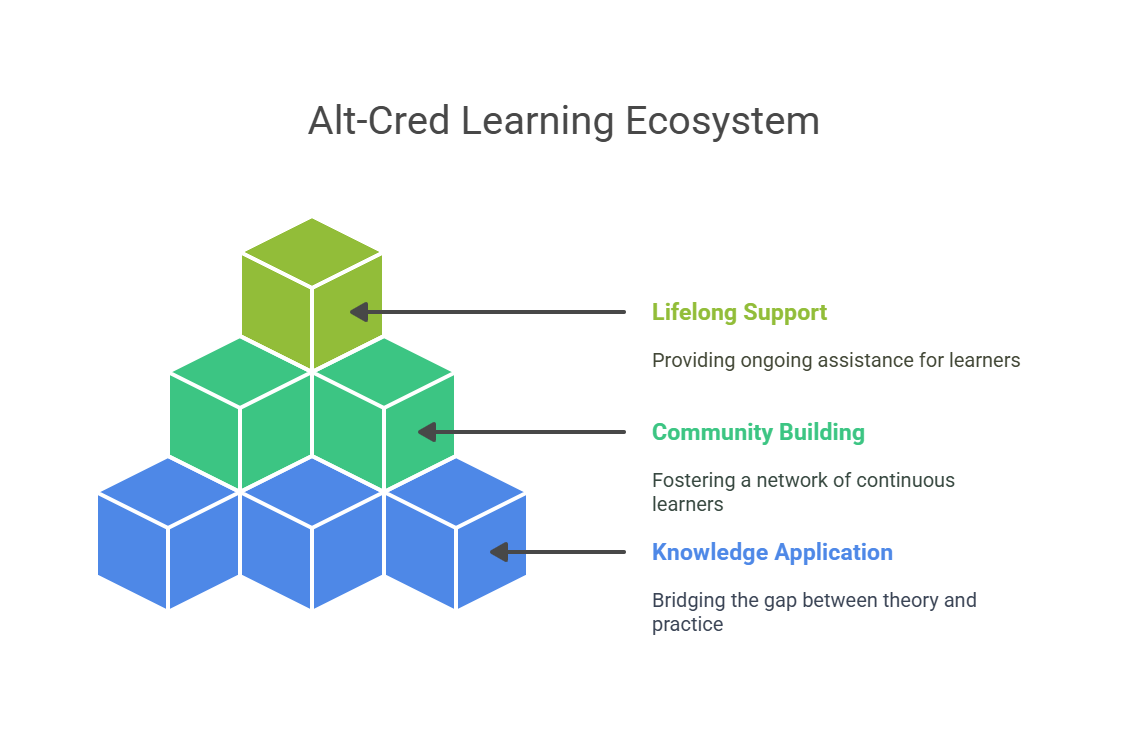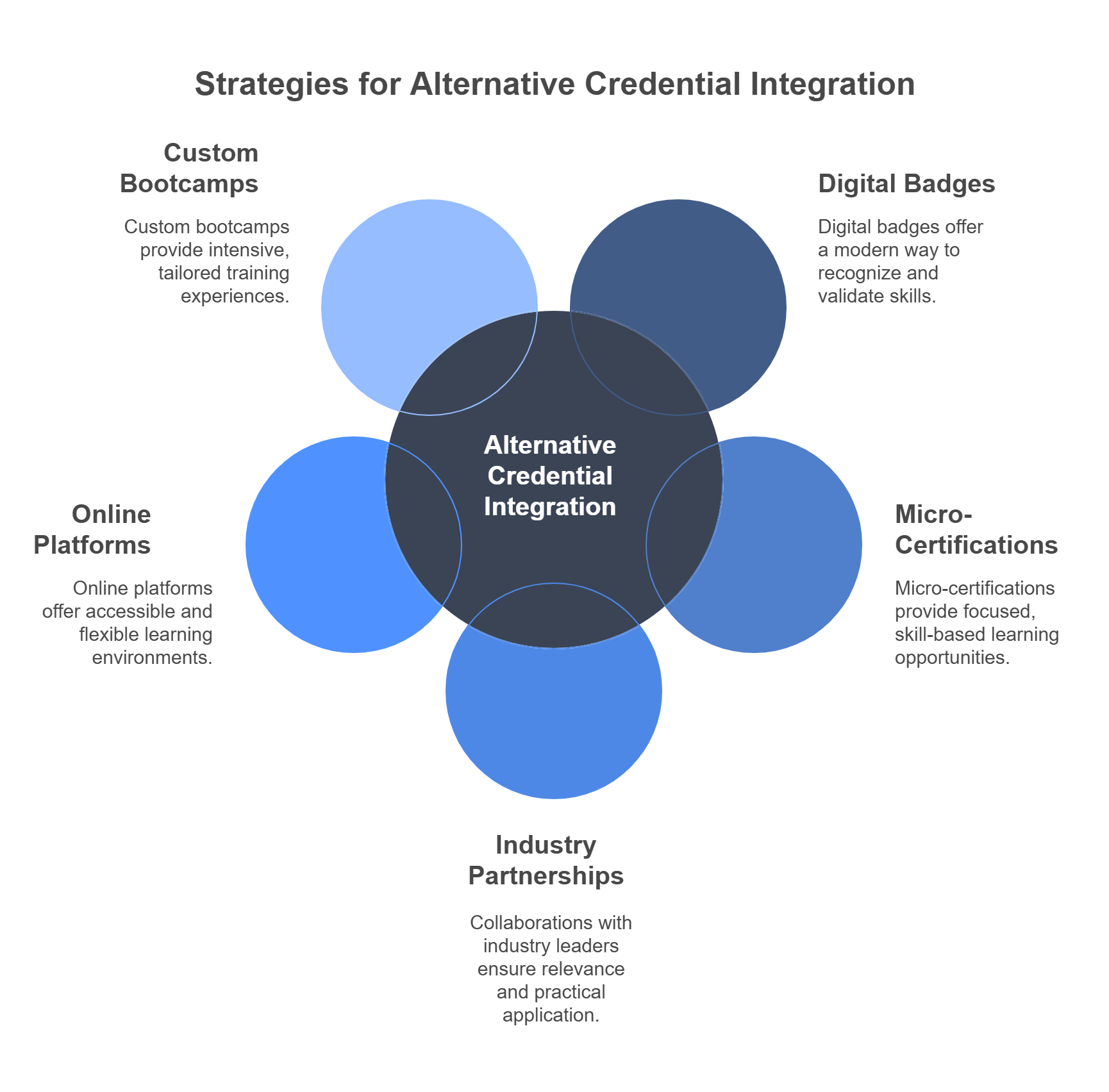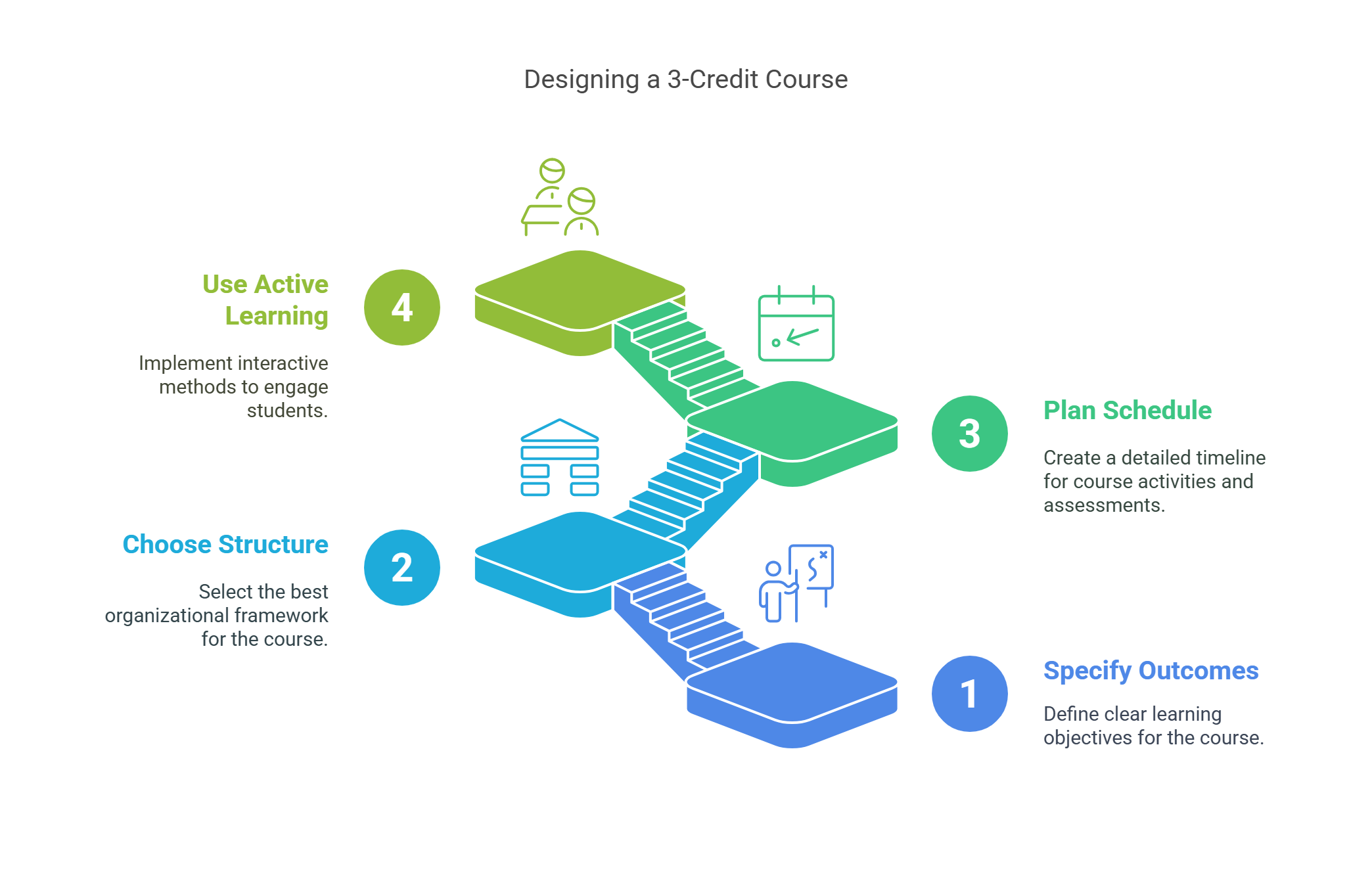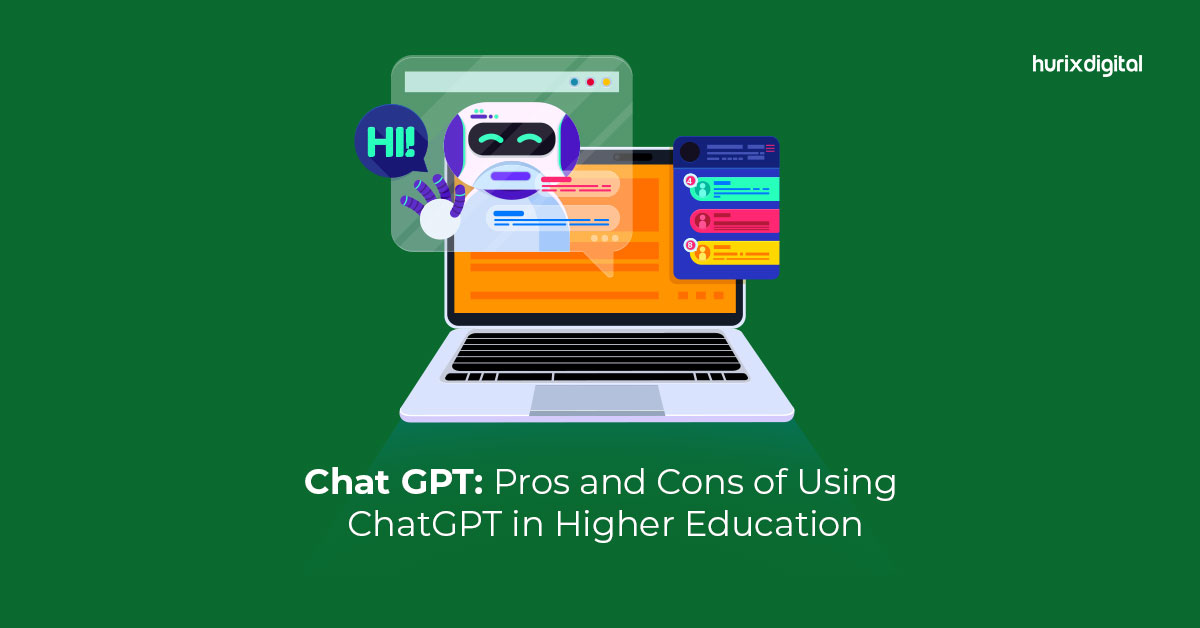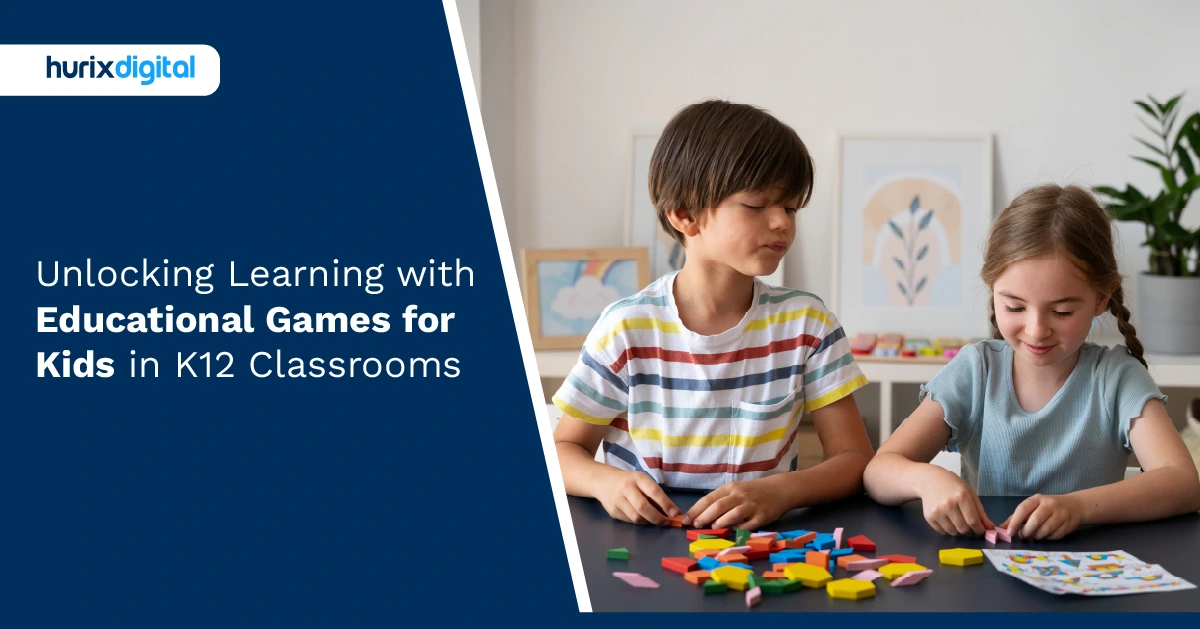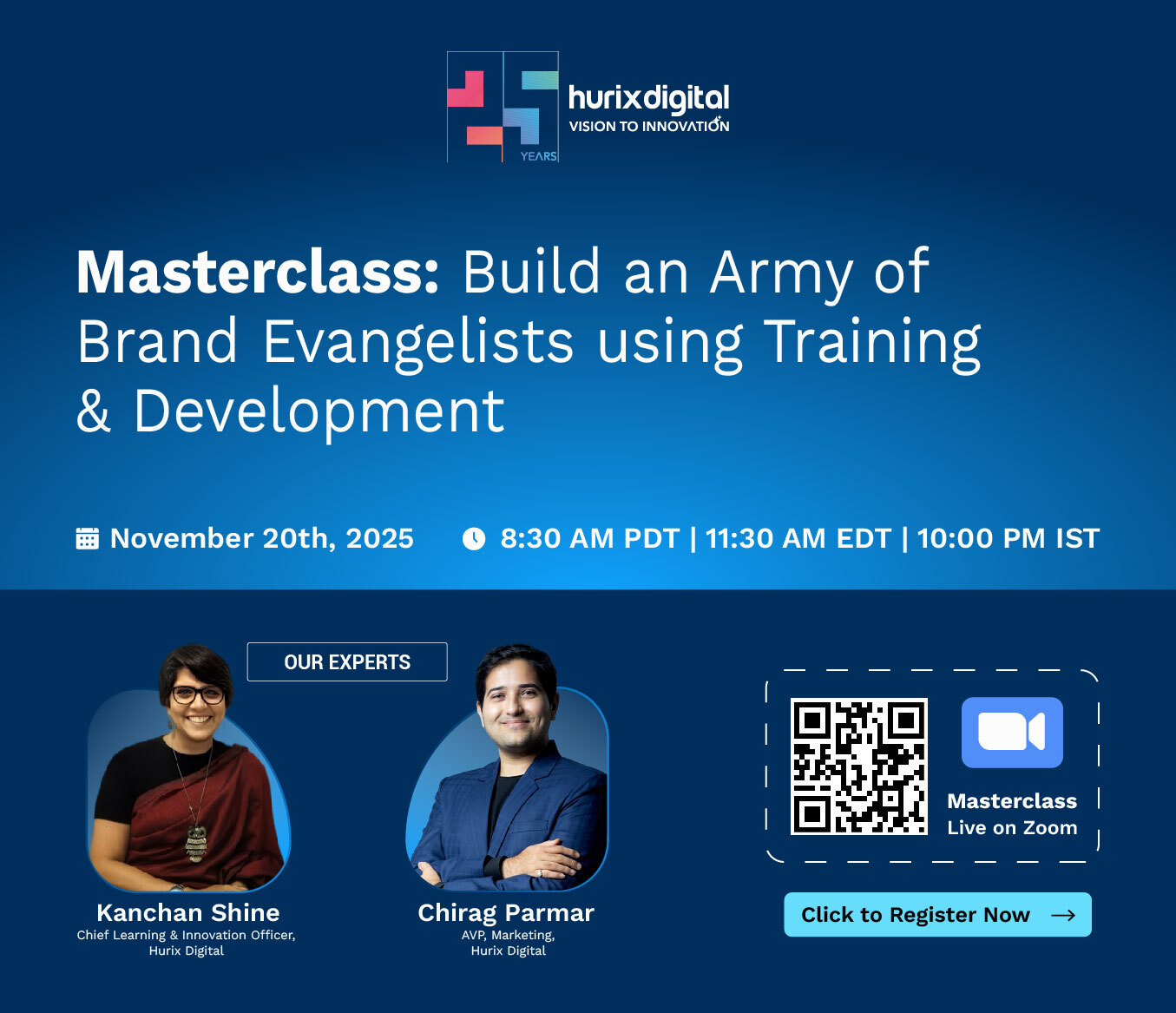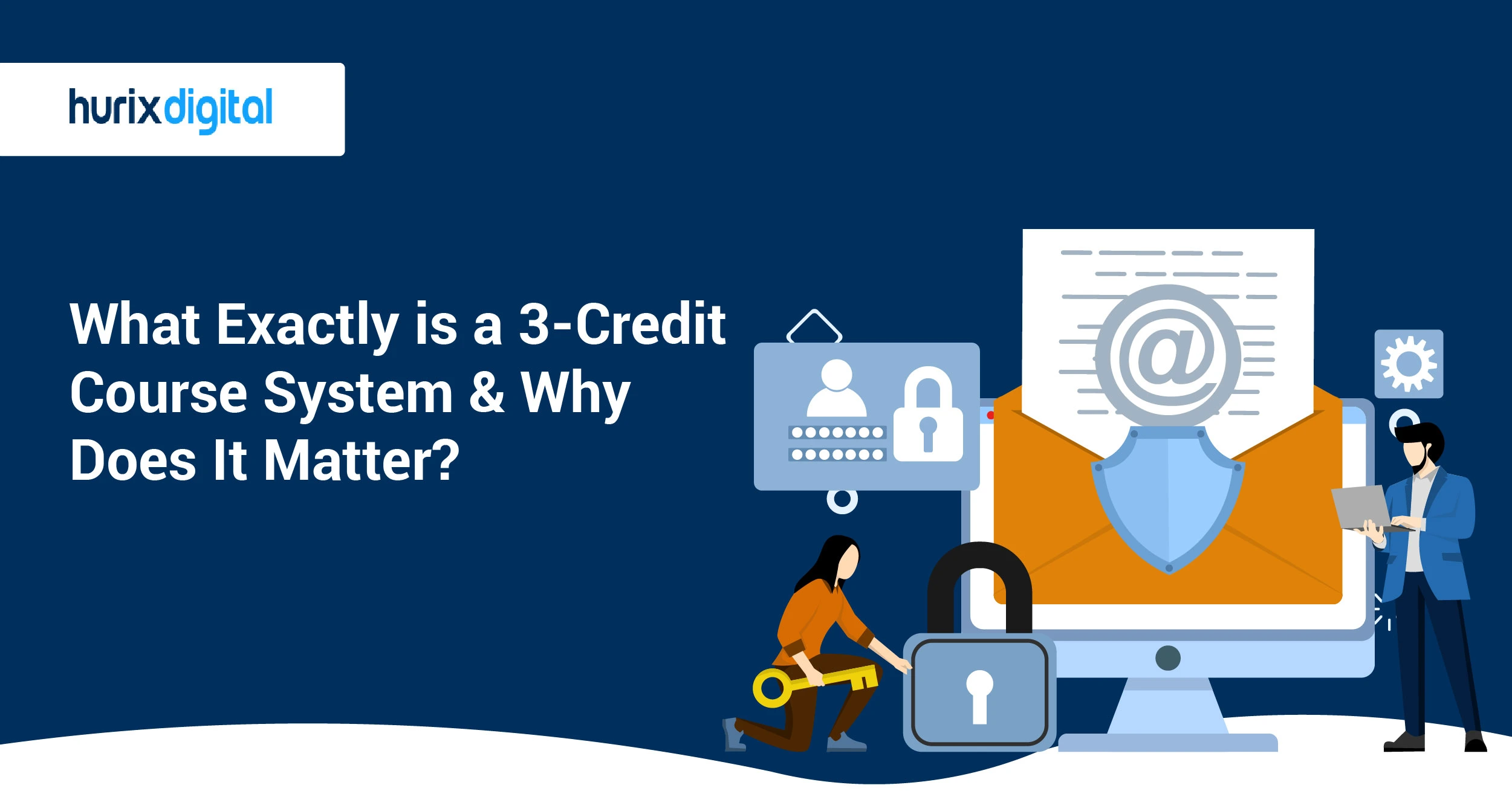
What Exactly is a 3-Credit Course System & Why Does It Matter?
Summarize with:
The concept of alternative credentials (alt-cred) is a newer one than traditional credentials such as bachelor’s, master’s, or doctoral degrees.
First popularized in the United States, alt-credentials are typically designed to help learners build skills, hone knowledge, and stay relevant in a competitive, dynamic work environment. Examples of alt-credentials include academic certificates, digital badges, and micro-credentials.
The alt-cred system thrives best when institutions build a comprehensive learning ecosystem around courses. Such an ecosystem nurtures competency-based education and continued skill-building, even after programs are completed.
These unique educational credentials validate skills and provide flexible learning opportunities. A recent report claims that 72% of U.S. workers believe that alternative credentials are an inexpensive way to acquire essential skills or experience for a new job.
This approach is bridging glaring gaps in traditional learning systems. While traditional courses provide foundational knowledge, they often fail to equip learners with the practical skills and ongoing support needed for long-term success. The alt-cred-based ecosystem, on the other hand, effectively bridges these gaps.
Table of Contents:
- Understanding College Credit Hours
- What are Alternative Credentials in Education?
- The Three Pillars of an Alt-Cred Learning Ecosystem
- Innovative Approaches to Integrating Alternative Credentials in Educational Programs
- How to Design a 3-Credit Course?
- Wrapping Up!
Understanding College Credit Hours
A credit hour is the unit of measurement used to determine how many credits a student will receive overall for taking a course based on how many hours they spend in that course each week. College courses typically meet two or three times a week, unlike many high school courses that require daily attendance. Usually, a student receives one credit for each hour they spend in class.
The credit hour definition stands for a unit of measurement used by colleges to express how much work is needed to pass a course. Over a semester, one credit hour usually equates to one hour of scheduled instructional time per week. For instance, throughout the semester, a 3-credit value in higher education would normally need three hours each week.
The majority of educational institutions in the United States follow a calendar that consists of two semesters, each lasting 15–16 weeks, plus extra brief vacations. Winter breaks last two to three weeks, while summer sessions last 10–12 weeks.
What are Alternative Credentials in Education?
Alternative credentials are nontraditional qualifications that give certification even though the candidate does not hold an education degree. They include digital badges, certificates, micro-credentials, and nano-degrees, usually pursued online or via short-term courses.
In contrast to traditional degrees, alternative credentialing methods focus on specific skills and knowledge areas, making them highly relevant in today’s hyper-fast job market.
These alternative learning certifications are especially valuable in areas where skills are evolving rapidly, providing students with a way to stay current and competitive.
In the academic context, alternative credentials provide a flexible educational option for institutions to attract and retain a diverse student body. At the same time, skills-based education programs help address the industry’s demands for specific skills.
The Three Pillars of an Alt-Cred Learning Ecosystem
Here’s a snapshot of how institutes can build a learning alt-cred ecosystem that transforms learning and makes it a continuous, motivating journey:
1. Transforming Knowledge into Practice: Bridging the Application Gap
Alt-cred learning ecosystems can nurture practical skills using the following tools:
- Skill Application Frameworks: Alt-cred programs must be designed to go beyond imparting theoretical knowledge. Institutions must develop frameworks that outline how to apply newly acquired skills in the workplace. This could include step-by-step guides, potential challenges and solutions, and methods to measure the impact on job performance. Leveraging technologies such as Virtual Reality to simulate live environments can create opportunities for learners to learn and practice skills required in the world of work.
- Action Plans and Mentorship: Institutes must build strategic partnerships with employers to co-create action plans that guide learners in applying their skills to real-world situations. Activities can include workshops, co-created programs and modules, and internships. Mentorship programs also connect learners with experienced professionals who can offer guidance and support as they implement their new skills.
2. Cultivating a Community of Continuous Learners
Community plays an important role in motivating learners to keep learning. Here are some ways to nurture the learning habit:
- Leveraging Alt-Cred Networks: Alt-cred programs can be the foundation of vibrant learning communities. For instance, institutions can build engaging online forums and nurture alumni networks for ongoing knowledge sharing and collaboration. Peer-to-peer communities, alongside alumni networks, are also effective in helping learners learn from each other, stay abreast of trends, build industry connections, and give back to their communities.
- Stackable Credentials and Upskilling Programs: The beauty of alt-cred programs lies in their modularity. Institutions can offer a variety of stackable micro-credentials and certificate programs that allow learners to update their skill sets continuously. This approach offers learners more flexibility in learning subjects relevant to them. It empowers them to adapt to changing industry demands and pursue career advancements quickly and effectively.
3. Sustaining Lifelong Learning: Ongoing Support for Learners
When building a lifelong learning ecosystem, institutions need a robust strategy to make learning a continuous journey that can keep pace with the evolving challenges in their domain.
Here are two strategic ways to nurture lifelong learning environments:
- Career Coaching and Development Services: Learners pursue alt-credentials to enhance their career prospects. Support activities such as career coaching, resume writing workshops, and interview preparation equip learners to navigate career transitions and future opportunities.
- Relevant Flexible Learning Options: Access enables lifelong learning. Offering a mix of flexible learning options, such as online learning courses, evening classes, and hybrid learning formats, can encourage learners to continue investing in themselves. A mobile-first learning experience and continuous curriculum updates also ensure that alt-cred programs remain relevant to evolving industry needs.
These strategies ensure that learners are continuously supported and motivated to develop their skills throughout their careers.
By transforming knowledge into practice, cultivating a community of continuous learners, and sustaining lifelong learning with ongoing support, institutions can create a robust and dynamic alt-cred learning ecosystem that meets the needs of the modern workforce.
Innovative Approaches to Integrating Alternative Credentials in Educational Programs
Integrating alternative credentials into educational programs requires new strategies that align with institutional objectives and industry requirements.
Here are five effective ways to incorporate these unique educational credentials into your curriculum:
1. Digital Badges
Digital badges are graphic symbols in education that represent specific knowledge and skills. They are usually associated with online profiles or resumes. Simply put, they serve as a means of awarding certificates and diplomas to students.
Students can use them to show their learning achievements, making it the best way to incentivize wholesome, skills-based education. Educational institutions can connect badges to their courses by picking a trustworthy platform that provides verifiable and secure badges.
This will motivate students to engage in continuous learning. It also provides them with shareable proof of their skills, improving their employability.
For instance, a university offering a data science course could issue digital badges for data visualization or statistical analysis skills.
This variant endorses a tailor-made and concentrated learning environment while conforming to industry needs and student career goals.
2. Micro-Certifications
Micro-certifications refer to specific credentials designed around certain skills or knowledge areas. They can be interspersed with regular degrees or constitute individual courses, allowing students to personalize their learning experience.
Linking micro-certification to study programs allows institutions to develop innovative education credentials that appeal to full-time students and working professionals.
For example, a business school could be a thought leader and offer micro-certifications in digital marketing, entrepreneurship, and/or project management. In addition to enhancing the value of a degree, these credentials provide students with practical skills applicable in the workplace.
3. Partnership with Industry Leaders
A successful strategy for maintaining the validity of non-traditional credentials involves partnering with industry big players. Partnering with industry and professional bodies may provide opportunities for alternative certification programs.
For example, a university may work with tech enterprises to create a cybersecurity certification program. It must also ensure that this course aligns with the modern industry’s best techniques and trends.
Such collaborations allow students to grow their networking abilities and gain practical insights into their chosen fields. Moreover, these relationships help institutions remain leaders in the academic sector and offer programs linked to employment outcomes.
4. Online Platforms
Internet platforms are reforming the pathway for nontraditional education and certification. These platforms are time-efficient and flexible, allowing students to engage in various educational fields at the time of their choice.
Universities can capitalize on these platforms, which provide a gamut of skills and learning units that range from basic to advanced levels. For example, Coursera, Udacity, and edX partner with universities and companies to develop courses that give micro-credentials or professional certifications.
This method allows nontraditional students, like international learners or working professionals, to learn. Introducing these online platforms in the curriculum can improve the accessibility and attractiveness of educational programs.
5. Custom Bootcamps
Bootcamps are short, intensive learning programs focusing on certain skills or industries. They provide a hands-on learning experience sufficient to raise students’ knowledge in programming, digital marketing, or data science.
Corporate clients can be involved in developing custom boot camps to help students focus on the most demanded skills. For example, a college can partner with local companies to design a boot camp that allows students to participate in software development.
It can include a skills-oriented course with a micro-certification and a capstone project. This approach allows for real practical know-how and motivates the newcomer to look for jobs straight after learning, a double win for the applicant and employer.
How to Design a 3-Credit Course?
Now that we have explained the course credits, it’s time to unlock the effective steps required to design one.
Whether you are a faculty member developing a new course or revising an existing one, this blueprint will help you design a 3-credit course that maximizes student learning:
Step 1: Specify Learning Outcomes
The first step in creating a 3-credit course is clearly defining the learning outcomes you want students to attain after the course.
Learning outcomes should be specific, measurable, achievable, relevant, and time-bound (SMART). These outcomes outline the skills and competencies students should acquire and act as a guide for course planning.
Step 2: Choose the Structure of the Course
After the learning objectives have been determined, describe the course structure that will assist students in meeting the objectives. Take into account the following components:
- Weekly Topics: Divide the course material into manageable chunks that correspond to the learning objectives. Establish the order in which the topics will be covered to guarantee a logical learning progression.
- Readings and Resources: Choose books and other materials that advance students’ comprehension of the course material. Ensure the resources are in line with the learning goals.
- Tasks & Assessments: Create a range of tasks that gauge students’ comprehension of the subject matter. When designing the assessment, keep the learning objectives in mind for better results.
Step 3: Plan Course Schedule
Planning the course schedule is crucial when creating a credit system in college to ensure that students can complete the prerequisites. Take into account the following elements:
- Class Time: Allocate three hours per week for instruction in a course worth three credits. Specify how the classes will be run and how time will be used in class to achieve the learning goals.
- Out-of-Class Work: For a 3-credit course, a general guideline is that students should spend an additional six hours per week on out-of-class work.
- Assessment Schedule: Develop a timeline for assignments throughout the semester. Spread out the assessment timeline evenly to avoid overwhelming students.
Step 4: Use Active Learning Techniques
Use active learning practices encouraging student participation and deepening learning in a 3-credit course. Among the successful active learning strategies are:
- Group Work: Assign projects that call for group collaboration and application of course topics.
- Case Studies: Use real-life case studies to encourage students to apply their theoretical knowledge to real-world events.
Wrapping Up!
The main idea of integrating alternative credentials into educational programs is to give students the power to choose. It aims to increase the value and relevance of education in the ever-changing business environment.
These innovative education credentials also give learners the basic skills and recognition crucial for modern job markets. An institution that adopts these teaching instruments can attract students from different backgrounds who may be looking for less rigid and practical educational courses.
Hurix Digital can be your partner in this transformative journey, providing expert assistance in crafting the most effective strategies for issuing credentials. With Hurix Digital, you can be sure of keeping up to speed with the newest education trends via digital learning tools that cater to your institution’s needs.
Connect with Hurix Digital today to learn how we can help you upgrade your educational programs and make your students feel like they belong.
Summarize with:

Senior Vice President – Business Development
at Hurix Digital, with over 25 years of experience in EdTech and workforce learning. He excels in business development, customer relationship management, and scaling digital learning solutions, driving global growth through innovative content, simulations, and AI‑driven training offerings
 Upcoming Masterclass | Build an Army of Brand Evangelists using Training & Development | November 20th, 8:30 AM PDT | 11:30 AM EDT | 10:00 PM IST
Upcoming Masterclass | Build an Army of Brand Evangelists using Training & Development | November 20th, 8:30 AM PDT | 11:30 AM EDT | 10:00 PM IST

